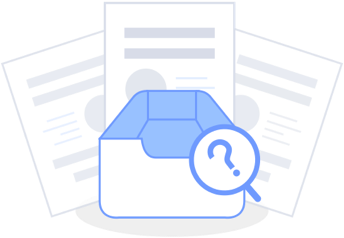 Ongoing
OngoingPA_SWITCH_V4
License
:GPL 3.0
Description
The Story
The project I am presenting to you is a 4 programmable zone security system.
After many years of experience as an installer, I decided to create a new security system. The reasons I did this were many and may not be interesting to many of you.
The main features I wanted to provide were 1) The security of a stabilized system. 2) The simplicity of user handling. 3) The simplicity of programming for the installer
and various others. The first version of this project is installed in my parents house, and it has been working flawlessly for 13 years.
The latest version that I present has been in operation for 8 years in the homes of my relatives and friends, as well as in my own home.
It is a project that I love very much, and I would highly recommend it to you for your use.
System Parts
The project I present to you is the central unit of the alarm. On which the wiring of the inputs and outputs of the installation ends.
This unit accepts external Modules for the various functions of the system. Such as
1) RF 433MHZ Receiver, for activating the alarm with Remote Control. 2) BlueTooth Module for the programming of the installer but also for the user's operation.
3) External I2C BUS devices for future use.
For the operation of the system by the user, many different devices can be used. Such as.
1) Remote Control 2) Stand alone RFID Keypad using RFID Tags or Keyboard 3) Push Button with LEDs
4) Dedicated Mobile App. 5) Sonoff working on 12V DC, with dry contact.
Main Panel Inputs and Outputs

Software
The Software for this project includes the Firmware for the STM32 processor in .hex file format (PA_SWITCH_V4.hex).
As well as the mobile applications for the user (PA_SW_Mon_V4.apk) and for the installer (PA_SW_Prog_V4.apk).
The user with this application can see the status of the zones, bypass the zones and other functions.
Attention: The Firmware of the processor is for the older PCB ( the green one on the project label )
I will have to first get the new PCB ( the one I present here ) and then re-upload the new
Firmware that corresponds to the new PCB. But the 2 mobile applications are the same ( will remain unchanged )
Hardware
On Board External modules.
1) Bluetooth Module ( HC-05 or HC-06 ) . This module is required for serial communication of the MCU with the mobile applications.
2) RF 433MHZ receiver Module. This module is required to ARM / Disarm the system using Remote Control.
3) External I2C BUS devices. This socket, is for future devices that could be created.
Note: The power polarity of the modules, is indicated on the PCB (silkscreen)

External Devices on Terminals.
1) Any sensor can be used for the zone inputs. PIR sensor , MC ( magnetic contact ) sensor etc..
The only requirement is that the output of the sensor should be a dry contact.
2) Siren Output. This Output provide 12V / ~1A when an alarm event occur.
3) PGM Output ( 12V/100ma) . This output is used to give an indication to the user that the alarm
is switched ON (Armed ) or OFF ( Disarm ) . The trigger event is programmable by the installer.
4) System Status LED. These LED are one for the ARM Status and one for the Zones Status.
5) On Terminals SW + C the installer should be insert the handling device by the user. There are multiple devices to select of.
The only requirement is that the device has to be dry contact N.O. ( Normally Open ) and should be triggered for at least 700ms
and then, stay as Open contact again. That feauture, give us the freedom of having multiple devices working at the same time.
And each user can have it’s own selection. I will create a video to demonstrate that feature in detail.
6) Power Supply Input. Power Input should be 12V / 2A. It is also good to have backup battery So my recommendation is a battery backup Power Supply.
As an DIY work, It is also could be used as enclosure box, for the Main PCB Board.

Documentation
I have separated the system instructions for easier searching.
So, there are the user, installer and engineer instructions, in 3 different files in .pdf format, were you can download them, for your convenience.
Future Thoughts
Some additional external devices could be created to give the system flexibility and make it more professional and modern.
These devices can be connected to the I2C BUS ( On Board Connector ) to communicate with the system's main board.
For example, the following devices could be created, and some others that I can't think of right now.
1) Communicator. The most important thing in a security system is its communication with the outside world. Like with the
Central Monitoring Station or directly with the user himself. So when there are any important events in the system, then
it can send them. The same important role has the store of some special system events. This device could play that role too.
A quick idea that coming in my mind, is the use of an ESP32 that has the ability to store the events in its memory and
at the same time the ability to communicate via local wifi network.
2) Advanced Power Supply and Battery Charger Circuit. The most critical hardware in a security system is this circuit.
There should be multiple layers of security, e.g. overload protection on both the backup battery and the power supply terminals.
Also reverse polarity protection on the battery connection, etc.
3) TFT Screen Touch Keyboard. For the best user experience, a keyboard could be created. Or a ready-made one from the market
could be used. The device in the picture below is ready in terms of Hardware and all that is needed is the creation of the Software.


4) Advanced Power Supply and Battery Charger Circuit. The most critical hardware in a security system is this circuit.
There should be multiple layers of security, e.g. overload protection on both the backup battery and the power supply terminals.
Also reverse polarity protection on the battery connection, etc.
Design Drawing
 The preview image was not generated, please save it again in the editor.
The preview image was not generated, please save it again in the editor.BOM
 Bom empty
Bom empty Clone
CloneProject Members
 Empty
Empty


Comment